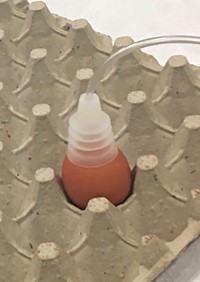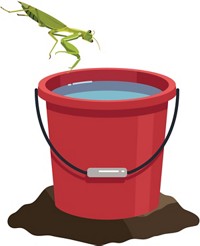Advertisement
Grab your lab coat. Let's get started
Welcome!
Welcome!
Create an account below to get 6 C&EN articles per month, receive newsletters and more - all free.
It seems this is your first time logging in online. Please enter the following information to continue.
As an ACS member you automatically get access to this site. All we need is few more details to create your reading experience.
Not you? Sign in with a different account.
Not you? Sign in with a different account.
ERROR 1
ERROR 1
ERROR 2
ERROR 2
ERROR 2
ERROR 2
ERROR 2
Password and Confirm password must match.
If you have an ACS member number, please enter it here so we can link this account to your membership. (optional)
ERROR 2
ACS values your privacy. By submitting your information, you are gaining access to C&EN and subscribing to our weekly newsletter. We use the information you provide to make your reading experience better, and we will never sell your data to third party members.
Consumer Products
Newscripts
Using Drano to guess a fetus’s sex, and Velcro for plants
by Matt Blois
February 7, 2022
| A version of this story appeared in
Volume 100, Issue 5
Gender reveal

Sonographers can tell parents the sex of their fetus with near-perfect accuracy 14 weeks after conception. Despite that technology, more colorful methods for guessing a fetus’s sex abound. This Newscriptster’s wife is having a baby this month, and the baby’s sex will be a surprise at birth. Friends, family members, and strangers have all offered their favorite sex-prediction techniques, arguing that a fetus’s heart rate or the shape of a pregnant person’s belly offer clues about the sex. A waitress in South Carolina told us she needs to only look deep into a pregnant person’s eyes to guess the fetus’s sex. No one has scientifically tested the staring-into-the-eyes method, but studies suggest those other techniques aren’t accurate.
Perhaps the strangest method is the Drano test, which posits that it’s possible to predict the sex of a fetus by mixing a pregnant person’s urine with Drano and examining the color. Green indicates a boy and yellow a girl, but there’s not universal consensus. In 1999, Sarah Ostler and Anna Sun, physicians in British Columbia, tested this method on a group of 20 women and determined it was bogus (Can. Med. Assoc. J.161, 1525). Ostler says these pregnancy myths persist because people who aren’t pregnant often want to participate in pregnancy. “You can get on the bandwagon,” she tells Newscripts. “Joining in that joy of life, I think that’s where it comes from.”
In 2014, Kristen Navara, a reproductive endocrinologist at the University of Georgia, discovered a more meaningful factor affecting a baby’s sex. After analyzing data from 68 million births, she determined that people who gain more weight during pregnancy give birth to a higher proportion of boys (PLOS One 2014, DOI: 10.1371/journal.pone.0114304). She says that might be because boys need more energy to develop properly, especially in early pregnancy.
Weight gain during pregnancy changes sex ratios at birth only slightly, so knowing a person’s weight probably won’t help anyone correctly guess a baby’s sex. But Navara says ensuring healthy weight gain in people carrying male fetuses could increase their son’s chances of survival, so there is a clinical reason for parents to learn their fetus’s sex. She suggests using a blood test, not Drano, to get accurate results.
A sticking point for plants

Barbara Mazzolai’s futuristic plan to protect the world’s biodiversity involves a network of tiny, biodegradable, plant-inspired machines that comb through the natural world, monitoring environmental conditions, highlighting problems, and even implementing solutions. “The idea is . . . they do something to protect natural ecosystems and then disappear,” she tells Newscripts.
Mazzolai and Isabella Fiorello, along with other researchers at the Italian Institute of Technology, advanced that vision by creating a Velcro-like material that can latch on to leaves. The material is inspired by the flower Galium aparine, which uses tiny barbs to climb over neighboring plants. In a 2021 paper, Fiorello and Mazzolai imagine a whole range of uses (Commun. Mater., DOI: 10.1038/s43246-021-00208-0).
They propose that farmers could use the material to attach sensors to crops, collecting individual plant–level data about temperature, humidity, and light. That could help farmers use water and agricultural chemicals more efficiently, they argue. Fiorello says that the material’s tiny hooks could also be used to precisely inject nutrients or pesticides into crops. A botanical garden in Palermo, Italy, has signed on to test whether that would actually work.
The researchers also used the material to build a robot that scoots across plant leaves like an inchworm. The paper speculates that these types of robots might someday roam through rain forests, continuously monitoring the natural environment. The robot doesn’t do much more than crawl, but it’s a step toward Mazzolai’s plan to employ a network of robots to save the planet. In another project, she wants to use drones to scatter seed-inspired robots that float through the air, drill into the ground, and then monitor for pollutants in the soil of remote landscapes.
Please send comments and suggestions to newscripts@acs.org.





Join the conversation
Contact the reporter
Submit a Letter to the Editor for publication
Engage with us on Twitter